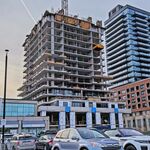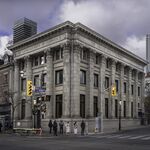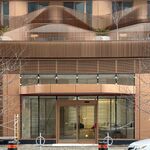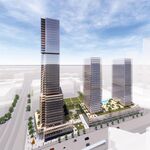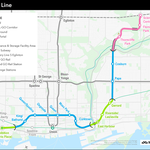Over the past several years there have been growing efforts to manage the climate change crisis that is impacting our world. One effort, established first in Seattle in 2010, is the implementation of "2030 Districts" in various North American cities. The 2030 Districts initiative aims to partner public and private sector companies alongside architects, owners of property, mangers, and stakeholders within communities to introduce new ways to make the core of our cities more sustainable.
Having spread beyond Seattle to seven more major North American Cities including Cleveland, Pittsburgh, Los Angeles, Stamford, San Francisco, Denver and Dallas, the 2030 Districts initiative has come to its first Canadian City—Toronto. The founding sponsors of our 2030 District initiative, including the Ontario Association of Architects (OAA) and Sustainable Buildings Canada, have partnered with lead sponsor Enbridge Gas Distribution and members of the district's advisory board—which includes representatives from Brookfield Office Properties, Avison Young, Integral Group, Energy Profiles Ltd., Jones Lang Lasalle, Diamond Schmitt Architects, Coolearth Architects, BOMA Toronto, Canadian Urban Institute, Ryerson University, and the City of Toronto—to meet a targeted 50% greenhouse gas emission reduction rate within Downtown Toronto by the year of 2030.
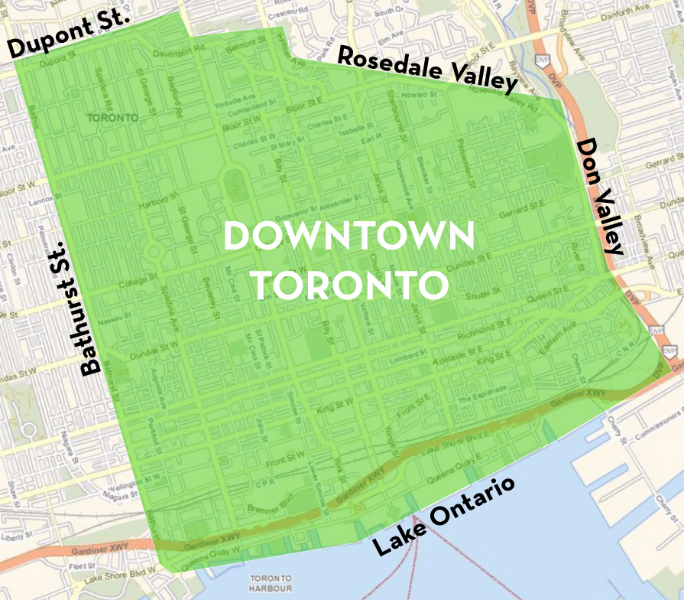 The 2030 District encompasses within it the Downtown core, image courtesy of Ontario Association of Architects
The 2030 District encompasses within it the Downtown core, image courtesy of Ontario Association of Architects
"We are the first in Canada, the first outside the continental U.S. We haven't tallied up all of the buildings to figure out the floor area if we're the largest 2030 district, but we're certainly at the top", said Jeff Ranson, Executive Director of the Toronto 2030 District.
Ranson sees this as a major step forward in the cooperation of municipal and provincial governments to address and combat climate change, but admits that there is more to the picture than government involvement. "Both the City of Toronto and the province of Ontario have set very ambitious goals to reduce greenhouse gas emissions by 80% (of 1990 levels) by 2050. So the targets are out there" said Mr. Ranson. "If you take that as a stated objective, those are pretty aggressive targets in line with international recommendations. They are certainly in line with the kinds of reductions we're looking at at a district level. The question really becomes: what is the government committed to do to ensure those goals are achieved? They're really only one piece of the puzzle. So what's happening between all the various stakeholder groups to coordinate and collaborate to try to accelerate the pace of change so that we can hit these aggressive targets."
Ranson also stresses that communication between other cities within the network is a vital element in the process. “There’s ongoing dialogue within the network about key challenges, developing different toolkits, things like that. It’s intended to be a replicable model that is customizable to different sizes of municipalities and different stakeholder groups. We’re hoping if we can get the ball rolling here and demonstrate some success, that it could be a model applied across the country.”
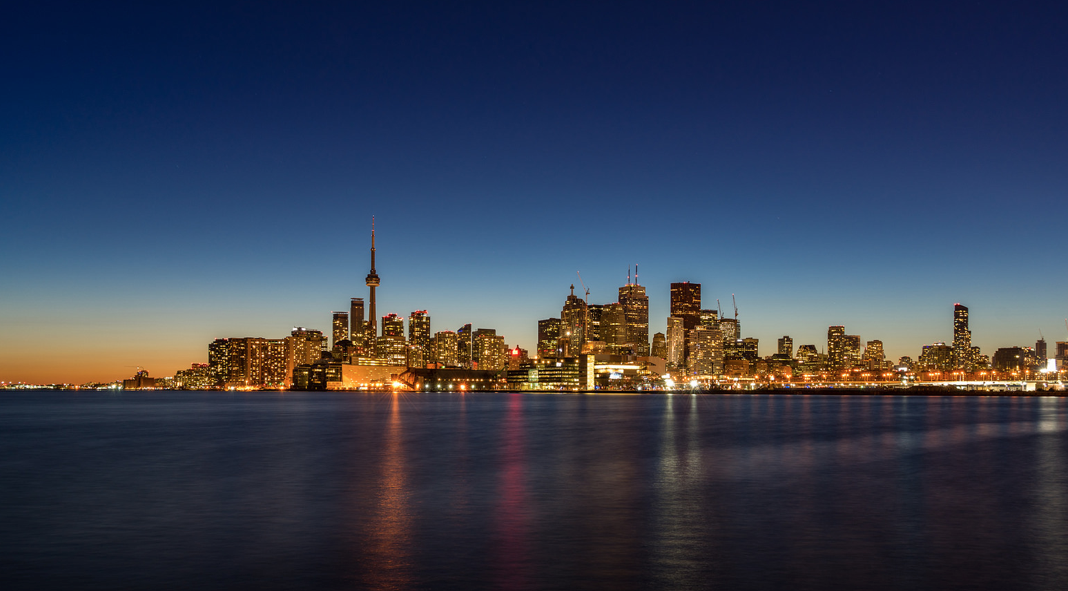 View of the Toronto skyline from the south, image by UrbanToronto Flickr Pool contributor Empty Quarter
View of the Toronto skyline from the south, image by UrbanToronto Flickr Pool contributor Empty Quarter
First explored as a possibility by Sustainable Buildings Canada (SBC) during a visit by the initiative's founder Ed Mazria at SBC's yearly Green Building Festival, the Toronto 2030 District initiative is now the largest among the growing network of cities. Following Toronto's Downtown planning boundaries of Dupont Street to the north, Rosedale and Don Valleys to the east, Lake Ontario to the south and Bathurst to the west, the District contains within it on any given weekday 550,000 people.
Many sponsors' representatives have expressed the initiative's importance. SBC chair Constantine "Taki" Eliadis believes the Toronto 2030 district to be an "important platform to engage focus industry, technical, political, and community stakeholders, in a specified geographic territory to establish and pursue aggressive targets".
Ontario Association of Architects president Toon Dereessen also recognizes the need for the 2030 District while highlighting the role that architects must play in urban sustainability. He says "Architects must be leaders in designing and building projects that are sustainable. That means continuing to educate ourselves, but also partnering with other organizations in the building sector to share the responsibility".
Steve Ichelson, VP of Operations at Avison Young Real Estate Management Services says "The Toronto 2030 District allows us to harness all of our brain power, knowledge and experience to improve the way we build, manage and operate buildings. Never before have we had a forum like this that bring everyone together to develop better building, constructions and operating solutions".
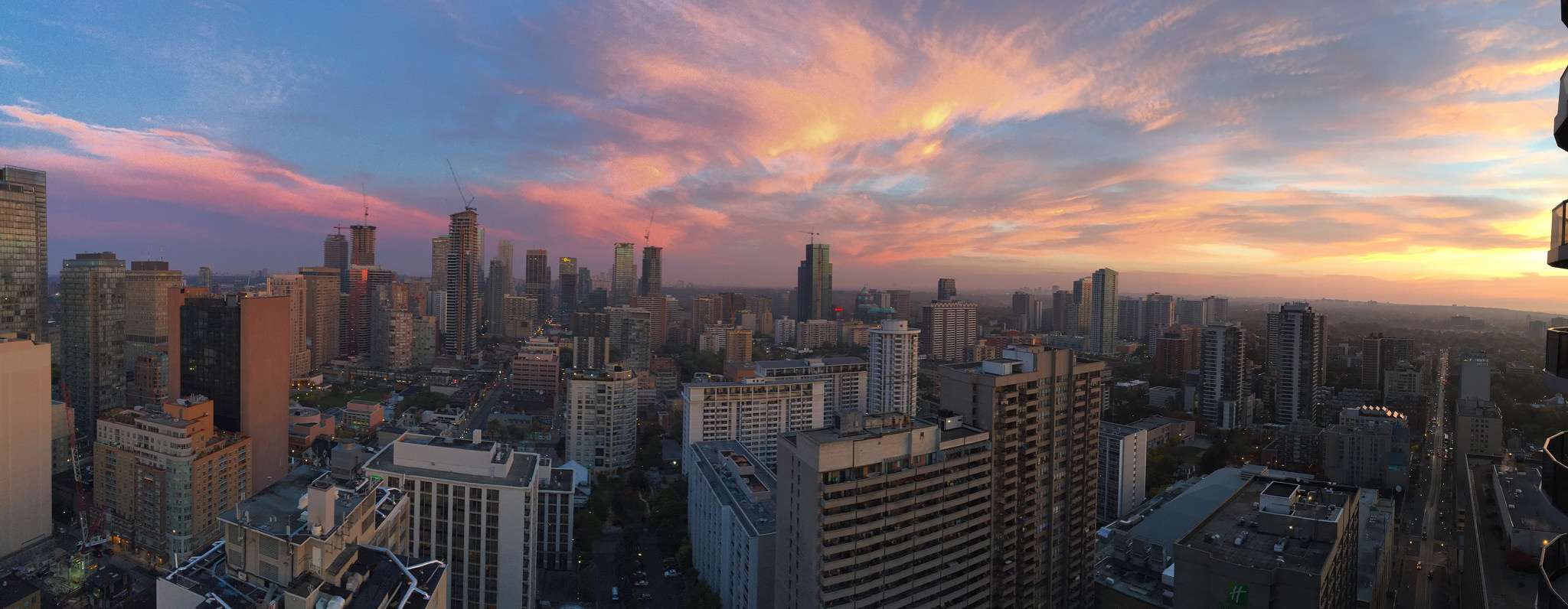 Construction in Downtown Toronto, image by UrbanToronto Flickr Pool contributor guyswhotravel
Construction in Downtown Toronto, image by UrbanToronto Flickr Pool contributor guyswhotravel
The benefits of the 2030 initiative radiates far from its district. The 2030 District puts Toronto and Canada as a whole on the map as leaders in dealing with climate change. The 2030 District also succeeds in aligning the city of Toronto along side its industry partners to the larger North American network of cities that are all dealing with similar environmental issues.
When asked about potential future expansion of the district boundaries beyond downtown, Jeff Ranson said “It may expand, we may add some other neighbourhoods that are close by, but there are opportunities in Toronto to create secondary 2030 districts, like at North York Centre.”
If successful, OAA President Toon Dreessen sees the 2030 program expanding to other Canadian cities. “There has to be enough critical mass to make it worthwhile from a district perspective", said Dreessen. The Toronto district is 17 square kilometers and has a population of 200,000 people and an employment base of nearly half a million. That’s a sizable group. Does it make sense to do it in other large urban centres? Absolutely. I see it coming to Ottawa and certainly other districts as well.”
You can learn more about the Toronto 2030 project by visiting their website.

 1K
1K 














